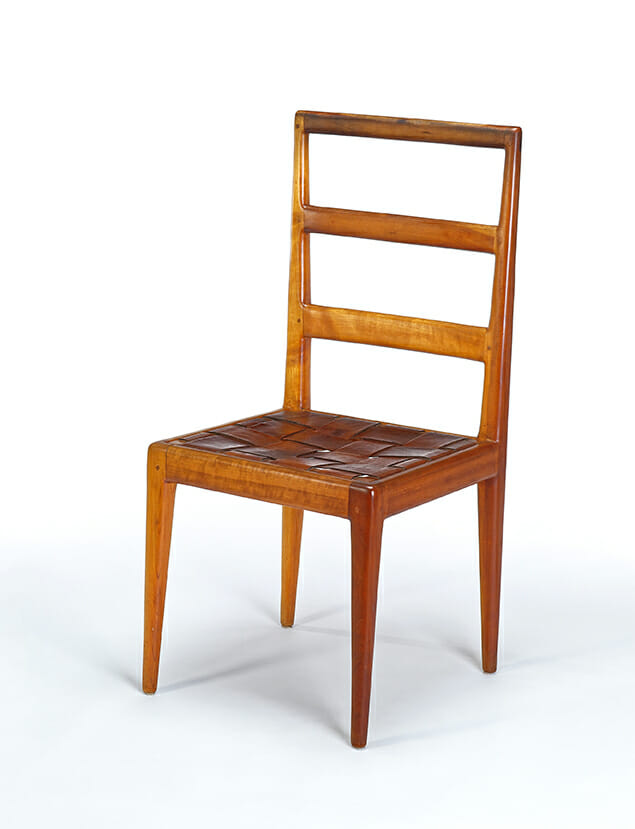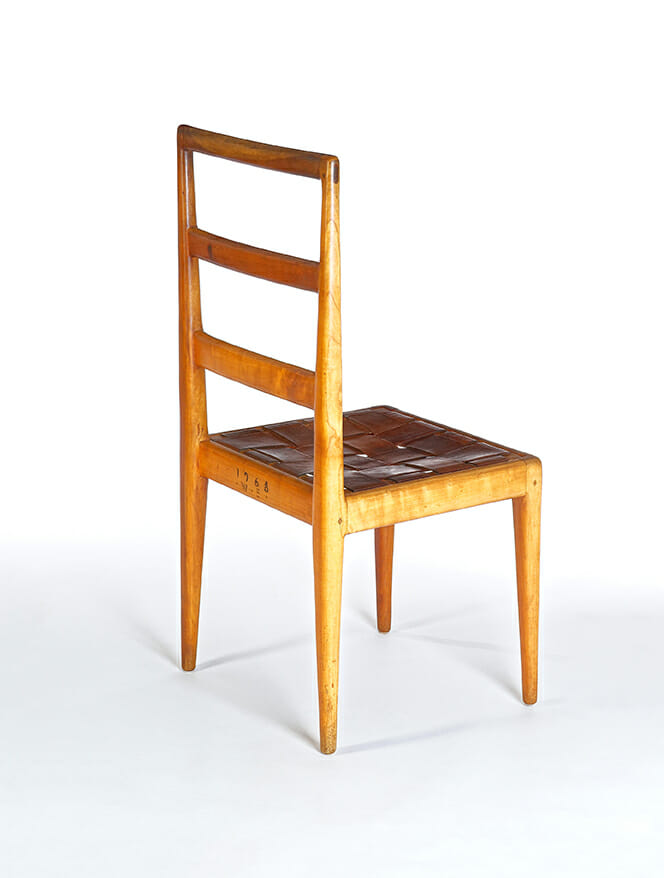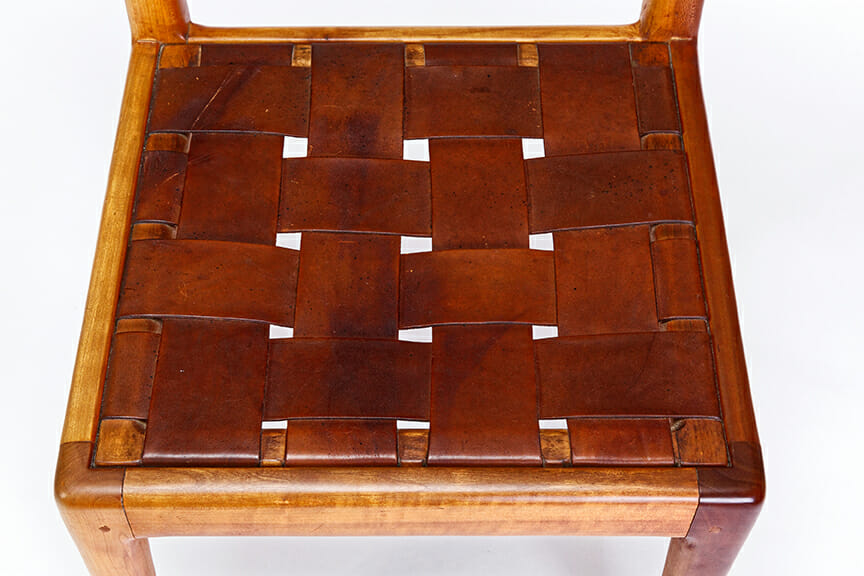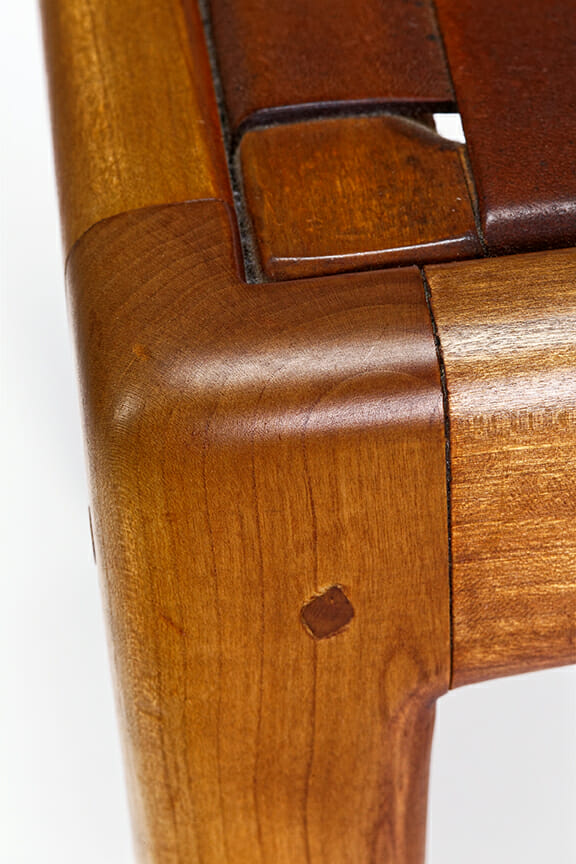Ladder-Back Chair
Wharton Esherick
1968
Cherry, laced leather seat
38.8 x 18 x 18 inches
Collection of the Wharton Esherick Museum
Images courtesy of Eoin O’Neill
Produced near the end of his life, this Ladder-Back Chair is the only design of this type in Esherick’s catalog. Lacking the organic curvature that has become synonymous with Esherick, the chair instead echoes a chair design that was first made in the Middle Ages; slats across the back of the chair, constructed perpendicular to the posts, resemble the eponymous ladder. By the seventeenth-century, the ladder-back chair was among the most common styles in England and it would later become a staple in colonial America. The United Society of Believers in Christ’s Second Appearing (better known as the Shakers) became well known for their production of the form, which eschews extraneous ornament and elements of comfort for plain surfaces and strong geometry.
Esherick’s contribution to the language of the ladder-back chair includes several touches that make clear that his take on the design is, indeed, his own — even as it has more restraint than other designs of the late 1960s like the Library Ladder, which takes the idea of the ladder in a far more unconventional direction. The laced leather strapping on the seat can be seen in Esherick furniture from the 1920s. There is also a slight taper to both the posts and legs, which mirror each other.




